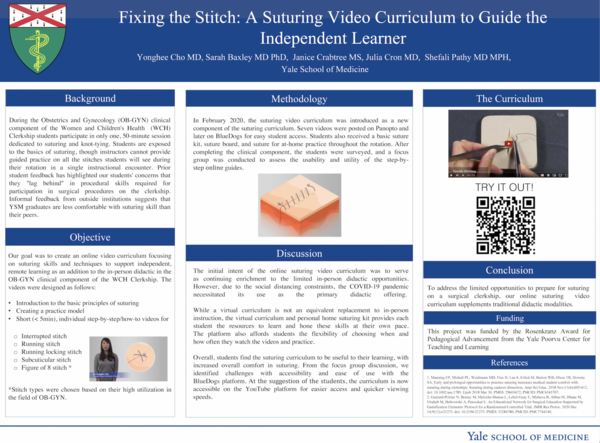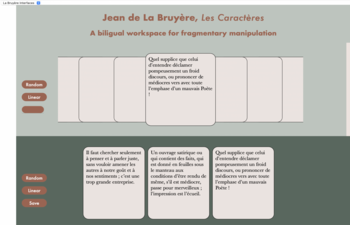The Rosenkranz Digital Showcase displays summaries and highlights from past and ongoing Rosenkranz Awards, for the benefit of Yale’s teaching community and instructors everywhere. It is updated on a yearly basis.
2019 Rosenkranz Awards
James Bonz, MD
Department of Emergency Medicine, Yale School of Medicine
Just in Time (JiT) Education
JiT Rosenkranz Presentation.mp4 from YCMS Procedural Videos on Vimeo.
Angela Lee-Smith
East Asian Languages and Literatures
Multiliteracies Podcast at Yale (MPY)
Yonghee Cho, MD
Obstetrics, Gynecology & Reproductive Sciences, Yale School of Medicine
“Fixing the Stitch: A Suturing Video Curriculum to Guide the Independent Learner”
Ivano Dal Prete
Department of History
The Earth of the Ancients through Digital Eyes
Pre-1800 Earth and environmental sciences are exciting and rapidly growing fields, that explore the deep cultural roots of our approaches to climate change and to the management of environmental crises. Yet present-day students find it hard to visualize dynamic processes ancient sources describe only verbally or through static images of problematic interpretations, due to the technological limitations of the time. The “Ancient Earths” project uses digital tools to translate past theories of geological and climatic change in animations that 21st-century students find intuitive and easy to understand.
Christophe Schuwey
Department of French
“Les Caractères digital edition & interfaces lab”
With eight editions printed in only six years (1688-94), six of which were extensively expanded, adding numerous remarks each year, Jean de La Bruyère’s Les Caractères confronts literary studies with an unusual object in terms of the pace and importance of its revisions. This is where digital technology makes sense: the plasticity of the screen makes it possible to represent, question, and explore the various aspects of this editorial UFO. Under the supervision of Christophe Schuwey (associate professor at Southern Brittany University), Geoffrey Turnovsky (associate professor of French, University of Washington) and the Swiss designer Vanessa Cojocaru, Yale French graduate students Nicola Angeli, Abigail Fields, Louise Moulin, and Jeanne Sauvage collaborated with their peers at the University of Washington, Seattle to develop innovative interfaces to read, explore and study the Caractères anew. Through comparing English translations with the original text (Sauvage and Julee Tanner [MLIS student at UW]), resolving polemical pseudonyms in the texts (Fields), mixing and reconfiguring the remarks (Angeli and Kallie Strode [Comp Lit student at UW]), or through graphs, maps and trees approach (Moulin and Sandrine Zhao [French MA student at UW]), this interface lab demonstrates the hermeneutic and pedagogical power of the digital humanities. These research and designs can be accessed here:
Marlyse Duguid, Mark Ashton, Damaris Chenoweth, Rosa Goldman, Laura Green, Jess Wikle, Karam Sheban, Adam Houston, Jenn Lawlor, Sam Feibel
Yale Forests, Yale School of the Environment
Yale Forests Digital Trail Project
2018 Rosenkranz Awards
Stan Mathis, MD
Department of Psychiatry, Yale School of Medicine
A Clinical Tool for Organizing Environmental and Social Determinants of Health
Ian Adelstein and Sudesh Kalyanswamy
Department of Mathematics
Curriculum Development in the Calculus Sequence
2017 - 2018 Rosenkranz Showcase
Presenters in order:
Steve Stearns and Madelon Case (3:13)
Training 21st Century Educators to Explain Science to the World
Dr. Ellice Wong, Dr. Christopher Tormey, and Dr. Alexa Siddon (17:12)
A Multi-disciplinary, Interactive, Digital Peripheral Smear Course for Medical Students and Beyond
Sarita Soares and Bryan Brown (41:25)
Sugar-Coated Science: Animating and Anthropomorphizing Drugs, Molecules and Cells to Enhance Medical Trainee Diabetes Education
Stefan Uddenberg (1:01:00)
Using Interactive Life Simulations to Train Public Health Students to Respond to Violent Conflicts and Complex Humanitarian Emergencies
Sara Schaefer (1:16:30)
Interactive Video-Based Patient Encounter Simulations in Movement Disorders
Monica Bravo (1:35:35)
Visual Culture of the National Parks
2017 Rosenkranz Awards
Monica Bravo
Department of the History of Art and Program in Ethnicity, Race, and Migration
Visual Culture of the National Parks
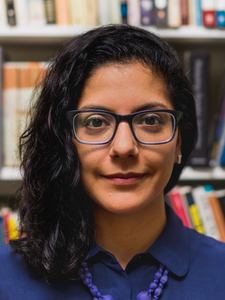 A cumulative student-created website resource that includes galleries, maps, timelines, multimedia, and text. Topics include the history of the national parks and how that history relates to other sociopolitical forces including the end of westward expansion, which displaced many indigenous populations the growth of the railroads and then the highway system, which facilitated tourism the beginning of the environmental movement and the development and popularization of photography. Course includes careful readings of primary and secondary accounts, close analysis of advertisements, books, collections, films, maps, paintings, photographs, posters, videos, virtual reality, and other artifacts of visual culture related to the national parks. The website will offer a platform to compare the written (e.g. use of word “preservation” vs. “use” in national park legislation over time) and especially visual rhetoric (e.g. panoramic view of a painting vs. detail in a photograph, bird’s eye view vs. worm’s eye view) of these objects of visual culture. The goal of these functions is to enhance understanding of the course’s two guiding questions: how does and did the visual culture of the national parks create, support, and narrate a particular vision of U.S. national identity at distinct historical moments? For whom are the parks and whose interests are represented through its visual culture? This project will be the first academically-created but publicly-available website specifically devoted to the visual culture of the national parks, bringing together images and analyses of related artworks and objects of different media and from distinct collections.
A cumulative student-created website resource that includes galleries, maps, timelines, multimedia, and text. Topics include the history of the national parks and how that history relates to other sociopolitical forces including the end of westward expansion, which displaced many indigenous populations the growth of the railroads and then the highway system, which facilitated tourism the beginning of the environmental movement and the development and popularization of photography. Course includes careful readings of primary and secondary accounts, close analysis of advertisements, books, collections, films, maps, paintings, photographs, posters, videos, virtual reality, and other artifacts of visual culture related to the national parks. The website will offer a platform to compare the written (e.g. use of word “preservation” vs. “use” in national park legislation over time) and especially visual rhetoric (e.g. panoramic view of a painting vs. detail in a photograph, bird’s eye view vs. worm’s eye view) of these objects of visual culture. The goal of these functions is to enhance understanding of the course’s two guiding questions: how does and did the visual culture of the national parks create, support, and narrate a particular vision of U.S. national identity at distinct historical moments? For whom are the parks and whose interests are represented through its visual culture? This project will be the first academically-created but publicly-available website specifically devoted to the visual culture of the national parks, bringing together images and analyses of related artworks and objects of different media and from distinct collections.
Erik Harms
Department of Anthropology
Southeast Asian Neighborhoods 360: Integrating Virtual Reality Experiences into the Urban Anthropology Classroom
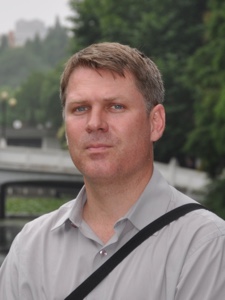 This project seeks to integrate rapidly developing and increasingly user-friendly and cost-effective Virtual Reality (VR) technology into the study and teaching of urban anthropology. Urban anthropology as a field is significantly invested in the study of “space” and “place,” both of which are inherently visual and affective concepts. Until recently, however, the primary media for conveying the experience of space and place in both anthropological research and in the classroom have been limited to texts and two dimensional images, sometimes supplemented with sound (such as books, articles, photographs, and films). Furthermore, anthropology as a whole is also a fieldwork-based discipline, and many of the insights offered by anthropology come specifically from the fieldwork experience—the act of “being there” and immersing oneself in a different (and often spatially distant) social context. One of the major challenges in teaching anthropology, then, is developing ways of getting students to experience the complexity of social life that emerges when one is actually conducting fieldwork. Put simply, there is presently a very significant gap between what anthropologists do in the field and what anthropologists are able to teach in the classroom, which is so often removed from the field. For professional anthropologists, the act of doing anthropology is a lively, noisy, hands on, affective activity, filled with sights, sounds and stimuli of all sorts. For students in the classroom, however, anthropology is often reduced to the largely passive and cerebral activity of reading and talking about texts. While discussing texts in a classroom is of course important, new technologies are making it increasingly possible to bring some of the excitement of “the field” into the classroom. The project seeks to develop innovative VR-based pedagogical tools that bring the teaching of anthropology into the 21st century.
This project seeks to integrate rapidly developing and increasingly user-friendly and cost-effective Virtual Reality (VR) technology into the study and teaching of urban anthropology. Urban anthropology as a field is significantly invested in the study of “space” and “place,” both of which are inherently visual and affective concepts. Until recently, however, the primary media for conveying the experience of space and place in both anthropological research and in the classroom have been limited to texts and two dimensional images, sometimes supplemented with sound (such as books, articles, photographs, and films). Furthermore, anthropology as a whole is also a fieldwork-based discipline, and many of the insights offered by anthropology come specifically from the fieldwork experience—the act of “being there” and immersing oneself in a different (and often spatially distant) social context. One of the major challenges in teaching anthropology, then, is developing ways of getting students to experience the complexity of social life that emerges when one is actually conducting fieldwork. Put simply, there is presently a very significant gap between what anthropologists do in the field and what anthropologists are able to teach in the classroom, which is so often removed from the field. For professional anthropologists, the act of doing anthropology is a lively, noisy, hands on, affective activity, filled with sights, sounds and stimuli of all sorts. For students in the classroom, however, anthropology is often reduced to the largely passive and cerebral activity of reading and talking about texts. While discussing texts in a classroom is of course important, new technologies are making it increasingly possible to bring some of the excitement of “the field” into the classroom. The project seeks to develop innovative VR-based pedagogical tools that bring the teaching of anthropology into the 21st century.
Kaveh Khoshnood, Stefan Uddenberg, Dumingu Aparna Gomes
School of Public Health and Department of Psychology
Using Interactive Life Simulations to Train Public Health Students to Respond to Violent Conflicts and Complex Humanitarian Emergencies
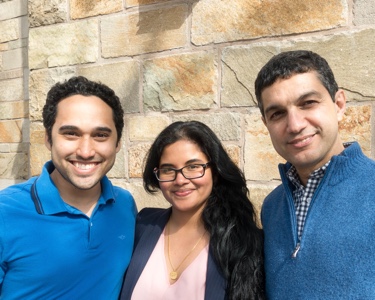 Simulation based learning enhances instructor’s ability to provide technical and functional expertise training, and hone students’ problem-solving and decision-making skills. This is accomplished by exposing students to immersive experiences that challenge them to deal with unanticipated events and the long-term consequences of strategic decisions. In this project, I will work with my team to develop a web-based interactive life simulation that guides the students through a public health scenario, in which the outcomes are dependent on the students’ choices throughout the simulation. This interactive, simulation case-based activity will explore a variety of public health interventions to control an infectious disease outbreak that spreads through a fictional refugee camp. This refugee camp will be situated in a violent conflict-affected setting in the Middle East and North Africa (MENA) region, in order to best fit the content and topic of my Spring 2018 class, EMD 540 - Responding to Violent Conflict: Epidemiological Methods and Public Health Interventions. The final product will be used in this Spring 2018 course, and shared with other faculty members and colleagues at Yale, at the American University of Beirut, and beyond. The product will also be shared with interested humanitarian organizations such as Doctors Without Borders, for training of their staff.
Simulation based learning enhances instructor’s ability to provide technical and functional expertise training, and hone students’ problem-solving and decision-making skills. This is accomplished by exposing students to immersive experiences that challenge them to deal with unanticipated events and the long-term consequences of strategic decisions. In this project, I will work with my team to develop a web-based interactive life simulation that guides the students through a public health scenario, in which the outcomes are dependent on the students’ choices throughout the simulation. This interactive, simulation case-based activity will explore a variety of public health interventions to control an infectious disease outbreak that spreads through a fictional refugee camp. This refugee camp will be situated in a violent conflict-affected setting in the Middle East and North Africa (MENA) region, in order to best fit the content and topic of my Spring 2018 class, EMD 540 - Responding to Violent Conflict: Epidemiological Methods and Public Health Interventions. The final product will be used in this Spring 2018 course, and shared with other faculty members and colleagues at Yale, at the American University of Beirut, and beyond. The product will also be shared with interested humanitarian organizations such as Doctors Without Borders, for training of their staff.
Sara Schaefer, Jeremy Moeller; School of Medicine
Department of Neurology
Interactive Video-Based Patient Encounter Simulations in Movement Disorders
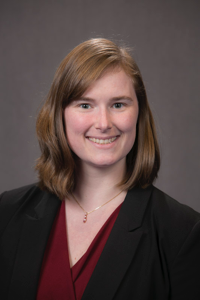
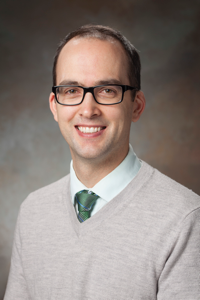 As the body of medical knowledge expands, medical education is forced to cover an ever-widening array of topics in a limited period of time. In one month of clinical neurology training, students cannot possibly be exposed to the array of diseases of which they are expected to have knowledge. We propose the development of video-based patient encounters in movement disorders, with interactive decision trees that will help students to integrate knowledge and decision-making in a self-paced environment. We will evaluate the efficacy of this new platform through pre- and post-tests, student evaluations and clerkship exam scores. Although originally designed for students, the ultimate goal is that the platform can be expanded to accommodate the learning needs of residents, fellows, or faculty in general neurology, medicine, and other related specialties. If the platform proves successful to promote student learning, further research will be designed to use the platform to deliver content in other subspecialties within neurology (e.g. epilepsy) and other medical fields.
As the body of medical knowledge expands, medical education is forced to cover an ever-widening array of topics in a limited period of time. In one month of clinical neurology training, students cannot possibly be exposed to the array of diseases of which they are expected to have knowledge. We propose the development of video-based patient encounters in movement disorders, with interactive decision trees that will help students to integrate knowledge and decision-making in a self-paced environment. We will evaluate the efficacy of this new platform through pre- and post-tests, student evaluations and clerkship exam scores. Although originally designed for students, the ultimate goal is that the platform can be expanded to accommodate the learning needs of residents, fellows, or faculty in general neurology, medicine, and other related specialties. If the platform proves successful to promote student learning, further research will be designed to use the platform to deliver content in other subspecialties within neurology (e.g. epilepsy) and other medical fields.
Sarita Soares, Bryan Brown
Internal Medicine–Primary Care Residency Program, Yale School of Medicine
Sugar-Coated Science: Animating and Anthropomorphizing Drugs, Molecules and Cells to Enhance Medical Trainee Diabetes Education
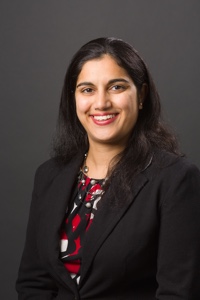
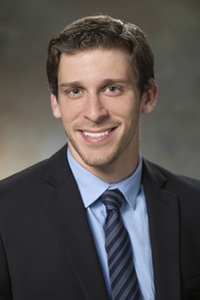 Within our undergraduate and graduate medical education, much of the new knowledge content is taught by lectures and small group activities. The medical school is utilizing videos and a “flipped classroom” model to teach much of basic science based copious evidence its efficacy in promoting adult learning. However, the clinical clerkship years have not utilized this often. When “flipped,” pre-lecture materials usually include reading an article, chapter, or watching an externally created video. To enhance learning for millennial learners, there is room for teaching modalities that better resemble the way millennials naturally take in information and entertainment. Diabetes management requires a particularly extensive science content retention that must be integrated with higher-level reasoning; its mastery is vital to effectively manage this highly prevalent disease. Our project will strive to employ not only a forward-thinking video-based, flipped-classroom model for teaching adult type 2 diabetes management, but specifically augment affective learning through narrative and humor through the medium of animations. Microscopic and inaccessible entities like drugs, molecules, and cells will be anthropomorphized and caricatured into highly memorable advanced organizers. We expect these “animated organizers” to greatly improve long-term knowledge retention and attitudes when trainees are surveyed after a year of animation-supplemented learning. Green-screen technology will also be incorporated, allowing the teacher to interact with these representations in styles from talk-show interviews to direct physical manipulation and conflict. PDSA-cycle evaluations of video quality and effectiveness will lead to subsequent improvements in an iterative process. During the project period, lead project creators and animators will also enroll in further study of animation and related skill sets — such as through online or in-person coursework — and will subsequently teach additional faculty in the department these animation and multimedia skills, primarily in a workshop-based format.
Within our undergraduate and graduate medical education, much of the new knowledge content is taught by lectures and small group activities. The medical school is utilizing videos and a “flipped classroom” model to teach much of basic science based copious evidence its efficacy in promoting adult learning. However, the clinical clerkship years have not utilized this often. When “flipped,” pre-lecture materials usually include reading an article, chapter, or watching an externally created video. To enhance learning for millennial learners, there is room for teaching modalities that better resemble the way millennials naturally take in information and entertainment. Diabetes management requires a particularly extensive science content retention that must be integrated with higher-level reasoning; its mastery is vital to effectively manage this highly prevalent disease. Our project will strive to employ not only a forward-thinking video-based, flipped-classroom model for teaching adult type 2 diabetes management, but specifically augment affective learning through narrative and humor through the medium of animations. Microscopic and inaccessible entities like drugs, molecules, and cells will be anthropomorphized and caricatured into highly memorable advanced organizers. We expect these “animated organizers” to greatly improve long-term knowledge retention and attitudes when trainees are surveyed after a year of animation-supplemented learning. Green-screen technology will also be incorporated, allowing the teacher to interact with these representations in styles from talk-show interviews to direct physical manipulation and conflict. PDSA-cycle evaluations of video quality and effectiveness will lead to subsequent improvements in an iterative process. During the project period, lead project creators and animators will also enroll in further study of animation and related skill sets — such as through online or in-person coursework — and will subsequently teach additional faculty in the department these animation and multimedia skills, primarily in a workshop-based format.
Stephen Stearns, Larry Bowman, Madelon Case, Eric Erkenbrack, Nikunj Goel, Daniel MacGuigan, Evlyn Pless, Maud Quinzin, Nathan Upham, Anna Vinton
Department of Ecology and Evolutionary Biology
Training 21st Century Educators to Explain Science to the World
 We propose to create an online library of short Lectures on the Leading Edge of Ecology and Evolutionary Biology given by PhD students and Postdocs. The procedures used to generate these talks, their content, and their online presence will, in rough order of importance, achieve these goals: (1) train our PhD students and postdocs in the art of giving clear, compelling, concise, online lectures; (2) showcase the diversity of competent young scientists, thus providing a gallery of role models; (3) provide content helpful and appropriate for AP biology courses and introductory biology courses at colleges and universities; (4) allow our job candidates to provide links on their CVs that illustrate their teaching skills and their familiarity with modern pedagogical technology. Prior to participating, PhD students would have to complete departmental teaching requirements and be established in their research; postdocs would need some prior teaching experience or training. Each student or postdoc will develop a pair of talks: the first to provide background and context, the second to illustrate their own cutting edge research. To ensure that the talks are of high quality, they will be developed in three stages of feedback and revision. Individuals proposing to develop a talk will be asked to record a draft and present it at a weekly symposium attended by graduate students, postdocs, and some faculty, who will provide constructive feedback. The revised talk will then be presented to an AP biology class at a local school, at which feedback from students and teachers will also be requested. After a second revision, the talks will be presented again to a forum of participants for a final round of feedback and revision. Only then will a talk be ready to be recorded in the studio, edited to ensure professional quality, and uploaded to the web. This process will result in a set of well-trained educators producing a steadily growing library of talks that clearly communicate exciting science to a world audience.
We propose to create an online library of short Lectures on the Leading Edge of Ecology and Evolutionary Biology given by PhD students and Postdocs. The procedures used to generate these talks, their content, and their online presence will, in rough order of importance, achieve these goals: (1) train our PhD students and postdocs in the art of giving clear, compelling, concise, online lectures; (2) showcase the diversity of competent young scientists, thus providing a gallery of role models; (3) provide content helpful and appropriate for AP biology courses and introductory biology courses at colleges and universities; (4) allow our job candidates to provide links on their CVs that illustrate their teaching skills and their familiarity with modern pedagogical technology. Prior to participating, PhD students would have to complete departmental teaching requirements and be established in their research; postdocs would need some prior teaching experience or training. Each student or postdoc will develop a pair of talks: the first to provide background and context, the second to illustrate their own cutting edge research. To ensure that the talks are of high quality, they will be developed in three stages of feedback and revision. Individuals proposing to develop a talk will be asked to record a draft and present it at a weekly symposium attended by graduate students, postdocs, and some faculty, who will provide constructive feedback. The revised talk will then be presented to an AP biology class at a local school, at which feedback from students and teachers will also be requested. After a second revision, the talks will be presented again to a forum of participants for a final round of feedback and revision. Only then will a talk be ready to be recorded in the studio, edited to ensure professional quality, and uploaded to the web. This process will result in a set of well-trained educators producing a steadily growing library of talks that clearly communicate exciting science to a world audience.
Edward Vytlacil, Nicholas Ryan
Department of Economics
Introduction to the Economic Analysis of Data
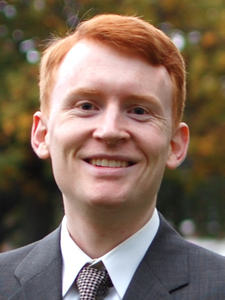
 The world is becoming increasingly data-driven: doctors make diagnoses with the help of machine-learning sports teams employ statisticians to decide when it is best to shoot and pass lawyers present statistical evidence on discrimination tech companies target their advertising, and political campaigns target their outreach, based on your personal history and traits. Economics as a discipline trains students to understand the power and limits of data analysis: to separate cause and effect, and to provide clear theories for what we should expect to see in data that describes human behavior.
The world is becoming increasingly data-driven: doctors make diagnoses with the help of machine-learning sports teams employ statisticians to decide when it is best to shoot and pass lawyers present statistical evidence on discrimination tech companies target their advertising, and political campaigns target their outreach, based on your personal history and traits. Economics as a discipline trains students to understand the power and limits of data analysis: to separate cause and effect, and to provide clear theories for what we should expect to see in data that describes human behavior.
We are writing to request a grant to re-boot our Econometrics sequence by developing a new introductory course on the Economic Analysis of Data. Econometrics is the field of Economics concerned with statistics and data analysis. The Economics major is the largest in Yale College and our introductory Microeconomics and Macroeconomics courses attracts roughly 700 and 450 students, respectively, both drawing students to the major and showing rigorous economic thinking to those who go on to other fields. Our current introductory econometrics course, which teaches roughly 200 students per year, does not integrate much data and does not have the same broad appeal. Our aim is to have the new course initially have an enrollment at least as large as Econ 131, and eventually become co-equal with Econ 115 and 116.
Our goals in the re-boot are (a) to introduce students to the power and joy of data analysis from the very start of the econometrics sequence (b) to expose students to the wide range of questions that modern empirical economists study and show what makes for credible economic analysis (c) to strengthen our overall econometrics sequence and major, if the new course is successful, by moving from a one-course to a two-course introductory sequence for all Economics majors. Our expectation is also that the re-boot, and (b) in particular, will draw more women and under-represented minorities into Economics as a field and a career.
Ellice Wong, Christopher Tormey, Alexa Siddon
Internal Medicine (Hematology/Oncology), Laboratory Medicine, and Pathology, Yale School of Medicine
A Multi-Disciplinary, Interactive, Digital Peripheral Smear Course for Medical Students and Beyond
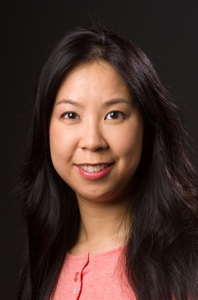
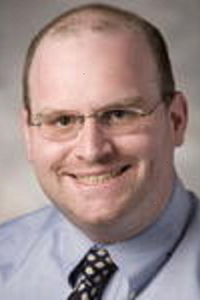
 The interpretation of peripheral blood smear (PBS) morphology is a critical clinical component for patient assessment, and is of particular utility for the characterization of hematologic disorders. Although medical students and post-graduate trainees are frequently told that PBS findings should be considered an essential aspect of their practice, they generally receive little formal education on how to interpret smears and often do not have a firm grasp of the complex terminology associated with smear reviews and its clinical application. As such, the primary aim of our project is to develop a novel, interactive, and sustainable online program for medical student learning in the domain of Hematology to improve access to PBS education and supplement gaps to core curriculum. Our belief is that such materials would enhance end-user understanding of the interpretation and clinical application of blood smears. To accomplish our aims and goals, we have assembled a multi-disciplinary team of experienced educators with backgrounds in Hematology, Laboratory Medicine, and Pathology. These individuals will work together to achieve the following: 1) the development of a free-form digital animation program that informs users on the basics of blood cell maturation and baseline, normal cellular appearance; 2) the creation of a library of digitally scanned and labeled blood smears from ‘real world’ scenarios, which will be associated with interactive cases and questions; and 3) the implementation of our animation program and digitally scanned/labelled slide cases in the Yale School of Medicine Hematology module of the Genes and Development course. Based on feedback of students and the feasibility of our approaches, a future, aspirational goal would be to adapt these educational tools for learners in the post-graduate setting, particularly those entering careers related to the practice of Hematology, Laboratory Medicine, and/or Pathology.
The interpretation of peripheral blood smear (PBS) morphology is a critical clinical component for patient assessment, and is of particular utility for the characterization of hematologic disorders. Although medical students and post-graduate trainees are frequently told that PBS findings should be considered an essential aspect of their practice, they generally receive little formal education on how to interpret smears and often do not have a firm grasp of the complex terminology associated with smear reviews and its clinical application. As such, the primary aim of our project is to develop a novel, interactive, and sustainable online program for medical student learning in the domain of Hematology to improve access to PBS education and supplement gaps to core curriculum. Our belief is that such materials would enhance end-user understanding of the interpretation and clinical application of blood smears. To accomplish our aims and goals, we have assembled a multi-disciplinary team of experienced educators with backgrounds in Hematology, Laboratory Medicine, and Pathology. These individuals will work together to achieve the following: 1) the development of a free-form digital animation program that informs users on the basics of blood cell maturation and baseline, normal cellular appearance; 2) the creation of a library of digitally scanned and labeled blood smears from ‘real world’ scenarios, which will be associated with interactive cases and questions; and 3) the implementation of our animation program and digitally scanned/labelled slide cases in the Yale School of Medicine Hematology module of the Genes and Development course. Based on feedback of students and the feasibility of our approaches, a future, aspirational goal would be to adapt these educational tools for learners in the post-graduate setting, particularly those entering careers related to the practice of Hematology, Laboratory Medicine, and/or Pathology.

